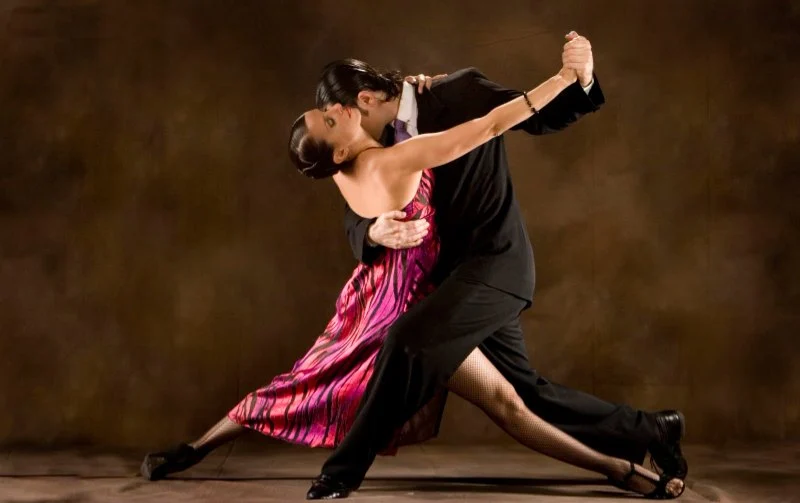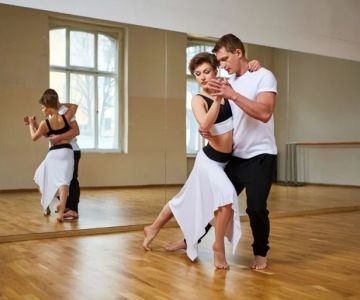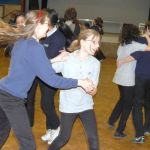
- 1. Introduction: The History of Tango and Its Fitness Potential
- 2. The Origin of Tango: From Social Dance to Workout
- 3. Fitness Benefits of Tango: Burning Calories and More
- 4. How to Start Learning Tango for Fitness
- 5. Real-Life Stories: Tango's Impact on Health and Fitness
- 6. Conclusion: Why Tango is a Fun Way to Stay Fit
1. Introduction: The History of Tango and Its Fitness Potential
Tango is a passionate and expressive dance style that originated in Argentina in the late 19th century. It has since evolved into one of the most popular dance forms worldwide, performed in both social settings and professional competitions. But beyond its rich history and captivating rhythms, tango offers significant fitness benefits. In this article, we explore how this captivating dance can help you burn calories, improve your health, and enjoy a full-body workout.
2. The Origin of Tango: From Social Dance to Workout
The origins of tango can be traced back to the working-class neighborhoods of Buenos Aires, Argentina. It was a dance created by the immigrants and the lower classes, blending African, European, and Indigenous rhythms. Initially, tango was a social dance performed in intimate settings, such as dance halls and street corners, where it evolved into a deeply emotional and passionate form of expression.
Over time, tango spread globally and became a highly refined dance performed in both ballroom settings and competitions. However, its fitness benefits were largely overlooked until more recently when people began to recognize the full-body engagement that tango demands. From a social gathering to a popular fitness workout, tango has truly come full circle.
3. Fitness Benefits of Tango: Burning Calories and More
Many people are surprised to learn that tango is an excellent way to burn calories while having fun. Here are some of the fitness benefits of incorporating tango into your routine:
- Calorie Burning: Tango is a high-energy dance that engages the whole body. Depending on the intensity of the dance, you can burn between 200 and 400 calories per hour. The quick footwork, constant movement, and coordination needed make tango a great cardiovascular workout.
- Improved Balance and Coordination: Tango requires precise foot placement, posture control, and body awareness. This helps improve overall balance and coordination, making it an excellent workout for strengthening the core and lower body muscles.
- Muscle Toning: Tango movements involve bending, twisting, and turning your body, which targets different muscle groups. From your legs and thighs to your core and arms, tango helps tone muscles and increase flexibility.
- Stress Relief: The emotional connection involved in tango dancing helps reduce stress and promotes mental relaxation. The music, the movement, and the partner connection all work together to provide an emotional release, making tango an effective form of stress relief.
4. How to Start Learning Tango for Fitness
If you’re interested in using tango as part of your fitness routine, here’s how to get started:
- Join a Class: Many dance studios and gyms now offer tango classes, specifically designed for fitness. Look for beginner-friendly classes that focus on the fundamentals of the dance, including posture, footwork, and rhythm.
- Start Slow: Don’t feel the need to perform advanced moves right away. Start by learning the basic steps and movements, and gradually increase the intensity of your practice as you become more comfortable.
- Practice Regularly: Like any workout, consistency is key. Practice regularly, whether it’s in class or at home, to build your strength, stamina, and technique.
- Dance with a Partner: Tango is traditionally a partner dance, and dancing with a partner allows you to experience the full benefits of the dance. If you don’t have a partner, many classes allow you to rotate partners, which gives you an opportunity to learn from different people.
5. Real-Life Stories: Tango's Impact on Health and Fitness
Here are some real-life stories that showcase the positive impact tango has had on people’s health and fitness:
- Case Study 1: Emily, a 45-year-old woman, began taking tango classes to help with weight loss. Over the course of six months, she lost 20 pounds, gained more confidence, and noticed a significant improvement in her posture and energy levels.
- Case Study 2: John, a physical therapist, added tango to his fitness routine to improve his flexibility and balance. After a few months of practice, he found that tango helped him feel more limber and improved his mobility, which was essential in his profession.
6. Conclusion: Why Tango is a Fun Way to Stay Fit
Tango is not just a beautiful and passionate dance; it’s also an excellent way to burn calories, improve body mechanics, and boost overall fitness. The emotional connection, rhythmic movements, and full-body engagement make it an enjoyable and effective workout. Whether you're looking to lose weight, improve flexibility, or simply have fun while staying fit, tango offers an exciting and dynamic way to meet your fitness goals. For more tips on incorporating tango into your fitness routine, visit American Dance Academy.







 Encore Dance Center4.0 (22 reviews)
Encore Dance Center4.0 (22 reviews) BB DanceSport4.0 (5 reviews)
BB DanceSport4.0 (5 reviews) Dancer's Den NYC5.0 (3 reviews)
Dancer's Den NYC5.0 (3 reviews) Dance Gallery Chicago4.0 (37 reviews)
Dance Gallery Chicago4.0 (37 reviews) Gallim Dance5.0 (2 reviews)
Gallim Dance5.0 (2 reviews) Tutu School Arvada5.0 (6 reviews)
Tutu School Arvada5.0 (6 reviews) Do Schools in Paris Have Dances? Understanding French School Social Life
Do Schools in Paris Have Dances? Understanding French School Social Life The History of Tango to Burn Calories: A Dance to Fitness
The History of Tango to Burn Calories: A Dance to Fitness What Is Homecoming Dance in High School? Everything Students Should Know
What Is Homecoming Dance in High School? Everything Students Should Know Zumba Trending on TikTok: The Ultimate Guide to Get Moving
Zumba Trending on TikTok: The Ultimate Guide to Get Moving Contemporary Dance Every Dancer Should Know – What You Need to Know
Contemporary Dance Every Dancer Should Know – What You Need to Know The History of Bachata for Adults: Discover the Roots and Evolution of This Dance
The History of Bachata for Adults: Discover the Roots and Evolution of This Dance